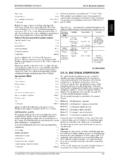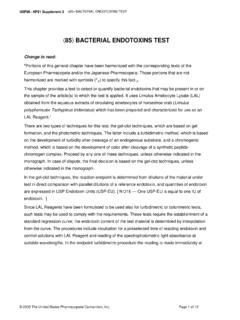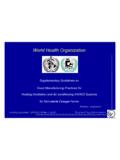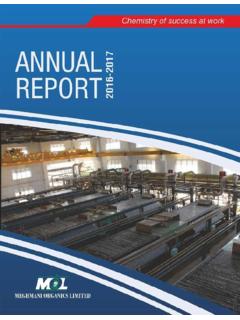Transcription of Business Development for the Biotechnology and ...
1 Business Development for the Biotechnology and Pharmaceutical Industry For Clare Business Development for the Biotechnology and Pharmaceutical Industry MARTIN AUSTIN. Martin Austin 2008. All rights reserved. No part of this publication may be reproduced, stored in a retrieval system or transmitted in any form or by any means, electronic, mechanical, photocopying, recording or otherwise without the prior permission of the publisher. Published by Gower Publishing Limited Gower House Croft Road Aldershot Hampshire GU11 3HR. England Ashgate Publishing Company Suite 420. 101 Cherry Street Burlington, VT 05401-4405. USA. Martin Austin has asserted his moral right under the Copyright, Designs and Patents Act, 1988, to be identified as the author of this work. British Library Cataloguing in Publication Data Austin, Martin Business Development for the Biotechnology and pharmaceutical industry 1.
2 Biotechnology industries 2. Pharmaceutical industry I. Title '0684. ISBN-13: 9780566087813. Library of Congress Cataloging-in-Publication Data Austin, Martin. Business Development for the Biotechnology and pharmaceutical industry / by Martin Austin. p. cm. Includes bibliographical references and index. ISBN 978-0-566-08781-3. 1. Biotechnology industries. 2. Pharmaceutical industry. I. Title. 2008. '4--dc22. 2007051369. Printed and bound in Great Britain by TJ International Ltd, Padstow, Cornwall. Contents List of Figures ix Foreword xi Chapter 1 The Role of Business Development 1. De ning Business Development 1. Knowledge 6. Analytical skills 8. Communication 12. Project management 14. Process improvement 15. Chapter 2 Planning the Portfolio 17. Portfolio management 17. Evaluating the company's products 18. Responding to changes in the market 21. Balancing the portfolio 23. Chapter 3 Identifying the Needs 29.
3 Portfolio objectives 33. Quantifying SWOT 34. Locating gaps 38. Gap analysis 39. Functional advantages 41. Segmentation 43. Portfolio constraints 44. Internal landscape 47. External landscape 54. Intellectual property 58. B U S I N E SS D E V E LO P M E N T F O R T H E B I OT E C H N O LO G Y A N D. P H A R M A C E U T I C A L I N D U S T RY. Chapter 4 Pro ling and Searching for Opportunities 65. Search database 67. Search targets 69. Web-based research 70. Contact management 72. Conferences 76. Competitive intelligence 79. Con dentiality 81. Initial due diligence 84. Chapter 5 Modelling and Valuation 89. Valuation 89. Approaches to modelling 91. Complex models 93. New product issues 96. Measures of value 98. Di erent value perspectives 99. New ventures 99. Steady state 101. Buying or selling 101. Enterprise value 102. Strategic value 103. Redemption value 104. Structure 105. Chapter 6 Structuring the Value 111.
4 Deal structures 113. Other deal structures 130. Chapter 7 Due Diligence and Negotiations 135. Due diligance 135. Negotiations 141. vi CONTENTS. Chapter 8 Sealing the Deal: The Contract 155. Contract structure 156. Dra ing the contract 162. Chapter 9 Making the Transaction Work 165. The nature of the alliance 165. Making the alliance work 167. Alliance management 170. Dealing with problems in alliances 172. Glossary 181. Index 185. vii This page intentionally left blank List of Figures Figure The structure of the book xii Figure Unseen market competitors 4. Figure SUI forecast 9. Figure Term sheet 10. Figure Quadrant chart 19. Figure Product cohorts by vintage 20. Figure Patent expiry 21. Figure Discovery success 22. Figure Mergers and acquisitions 24. Figure A61k patent oppositions 25. Figure Objectives, strategy and tactics 30. Figure Traditional SWOT 35. Figure Numerical SWOT components 36.
5 Figure Numerical SWOT chart 37. Figure Numerical SWOT interpretation 37. Figure Growth circles 40. Figure CNS organization chart 43. Figure market segmentation by product function: a gap analysis 44. Figure Opportunity a ributes 47. Figure Search plan by segment 67. Figure Search strategy, by segment, by product, by company 70. Figure Opportunity anatomy: emergency contraception 71. Figure Mind mapping 80. Figure Genetic reduction of market opportunity 86. Figure Evaluation array 87. Figure A cocked hat' 90. B U S I N E SS D E V E LO P M E N T F O R T H E B I OT E C H N O LO G Y A N D. P H A R M A C E U T I C A L I N D U S T RY. Figure GPS triangulation 91. Figure market share penetration 92. Figure Probability of failure 107. Figure Distribution of licences 112. Figure Valuation of an asset for sale 113. Figure Take-out versus earn-out value 124. Figure Special purpose vehicle 133.
6 Figure Negotiation mind map 142. Figure Term sheet issues 148. Figure Do's in negotiations 153. Figure Don'ts in negotiations 153. Figure A licensing program' 156. Figure Alliance types 166. Figure Alliance structures 167. Figure Joint steering commi ee 170. Figure The terminal cascade 173. x Foreword This book has come about through the creation of a course in pharmaceutical Business Development . In 2004 I met with Luc de Lange who was establishing CELforPharma a new management training rm where he is the CEO. Luc was seeking new courses for the new company. He had identi ed that no speci c courses were being o ered for the industry in the area of Business Development and asked if I could develop such a course for him. The result is a 2-day course which covers largely the same content as this book and has evolved since the initial versions to be a high-level overview of Business Development with special emphasis on the needs of the pharmaceutical and Biotechnology industry.
7 In developing that course I received a great deal of help from Luc in re ning the structure and delivery of the messages. Over the last 3 years we have focused on the issues that the delegates have identi ed as the most interesting and relevant to them, and these are re ected in this book. Therefore, rather than a empt to explain every nuance of the techniques and tools required to develop businesses in the industry, I have tried to provide the same kind of illustrated tour' of the structure of a licensing transaction with an occasional detour into mergers and acquisitions or nancing. The course now also runs twice a year in China in association with David Xue of Pharmaguys Ltd, Be ing. I have since developed an expanded 4-day version of the course which is presented with a faculty of colleagues from the industry as the European Course on BioBusiness Development ' (ECBD) and is run under the auspices of the University of Basel as an elective module in the Masters in Advanced Studies in Drug Development Sciences o ered by the university under Professor Fritz B hler.
8 Business Development in the pharmaceutical industry is a topic which is too broad and di use to try and encapsulate comprehensively in a single volume and I cannot hope to provide a description for more than a fraction of the possible variations in deal structure and techniques used. So, drawing on the continuing popularity of the pharma Business Development course, I o er some of the experiences I have had and stories I have heard which can act as a B U S I N E SS D E V E LO P M E N T F O R T H E B I OT E C H N O LO G Y A N D. P H A R M A C E U T I C A L I N D U S T RY. broad checklist for those trying to bring their own deals to a successful close. I'm sure I will have missed many items and issues but I hope the book will act as a reasonable guide to help colleagues plan their Business Development deals and other transactions and avoid some of the worst pitfalls while en route. STRATEGIC.
9 ANALYSIS. Portfolio Profile } GAP. ANALYSIS. DUE. DILIGENCE 1 {. Search } WHERE, HOW, WHO? ANALYSIS. MODELLING. { Evaluation VALUATION } FINANCE &. STRUCTURE. Term Sheet PSYCHOLOGY. & TACTICS {. Negotiation } STRUCTURING. DUE DILIGENCE 2. Contract GOVERNANCE DISPUTE RESOLUTION. TERMINATION. Alliance Figure The structure of the book xii CHAPTER. The Role of Business Development 1. De ning Business Development What is Business Development '? This is usually the rst question I have to answer whenever I'm asked what I do for a living by people outside the pharmaceutical industry. The answers I try to give are o en tailored to the audience and what they are likely to quickly understand from their own experience. However, as few people have any idea that such a role exists beyond some hazy idea of marketing they usually smile politely and suddenly remember there is someone on the other side of the room to whom they must say hello immediately.
10 So a de nition of Business Development , at least as I. have seen it performed since it comes in many di erent guises, will be useful. I. de ne it as any activity that alters the status quo of the Business '. This includes activities such as: planning adding for growth subtracting for pro t Business process improvement competitive awareness and advantage. Planning is a central activity to Business Development because, as a friend once told me, There is no worse combination than great tactics and a lousy strategy you just make things worse faster.' In order to plan well, the Business developer will need to have or obtain a number of skills and resources and these will be the subject of later chapters. However, a base set of skills for the Business developer include being well organized, having a good breadth of knowledge, imagination, being good at analysis in di erent forms and having good communications skills, particularly listening and interpretation.

















